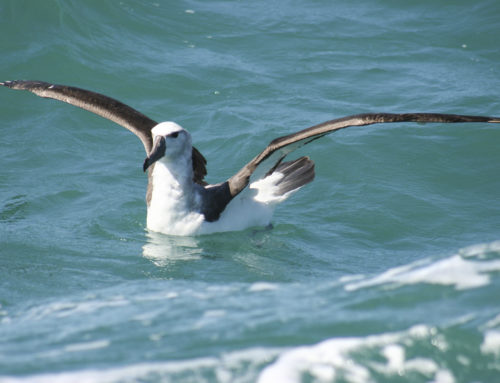FIRST STUDY OF SHARK WOUND HEALING
June 03, 2010 by dyertrust
First study of shark wound healing
Unique research by the Trusts marine biologists was featured at the recent International White Shark Symposium in Honolulu, Hawaii attended by more than 100 leading researches from all over the world.
Marine biologist, Alison Towner is among the first researchers to study the ability for a Great White Shark to recover from a severe wound following a boat strike. Despite the severity of the wound, the 2.3 metre Great White Shark recovered completely from the wound within nine months.
 |
 |
Towner said: We had the unique opportunity to observe this shark from the surface and underwater following the accident. This provided a unique opportunity able to make detailed study of the animals ability to heal from a major wound.

The tolerance to such chronic wounds in the species appears to be remarkable, and the same scope of wound on a marine mammal for example, would surely have caused fatality.
Given the increase in maritime trafficfor commerce and recreationit is important that we study wound healing in marine species such as the Great White Shark. Currently, we have very little information about their survival and recovery, Towner said at the symposium.
Trusts researchers to join international shark project
The area off Dyer Island has one of the most dense populations of Great White Sharks in the world.
With eco-tourism partner,Marine Dynamics Tours, the Trust has developed aa photographic database of thousands of dorsal finsof individual Great White Sharks
These photographs will now be integrated into the White Shark Photo ID Project being co-ordinated by the University of Bristol, UK. This electronic database, which will be accessible to researchers worldwide will provide valuable new insights into the movements of sharks.
The movements of the Great White Shark remain a mystery. We know that the sharks around Dyer Island come and go but we do not know where they go and why some return. This database should help to begin to answer these important questions and track the movements of sharks around the oceans. Towner said.
To view the shark wound poster,click here.
To learn more about the Great White Shark,click here.
To donate to our research and Save-a-Shark programme,click here.




